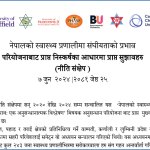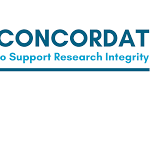Earlier today I attended an interesting workshop about research environment at BU, which the University is hoping to strengthen further. One of the topics that came up for discussion was the links with University governance. This has changed markedly at BU in recent years, and I believe that this has had a significant impact on our research environment. In an attempt to understand the broader trends in University governance in the UK, I came across this very interesting piece of research by Michael Shattock of the Centre for Global Higher Education at UCL, which can be accessed here: http://www.researchcghe.org/perch/resources/publications/wp13.pdf
I thought this worth sharing, as it provides some insight into changes that have occurred at BU, as well as at other institutions. Some of the key findings are reproduced below. It would be very interesting to explore further how such changes are impacting our research environment at BU.
“Perhaps the greatest transformation in university governance has been the transfer of decision making powers over such policies to chief executives, SMTs and to ‘manager academics’ (Deem et al 2007): inner cabinets answerable to senates have become SMTs, administrators have become managers…. Thus Hogan, in two investigations over 1993 to 2002 and 2002 to 2007, found that 74 per cent of institutions examined in the first and 65 per cent in the second had been subjected to quite fundamental restructuring involving reducing and merging faculties and departments, the creation of devolved colleges or schools and the establishment of 7 new senior officer posts to be filled through public advertisement from outside the university rather than from election from within (Hogan 2005 and 2012). This proliferation of senior posts had always been a feature of the post-1992 universities but Shepherd shows that the number of such posts increased by 40 per cent in the pre-1992 universities between 2005 and 2012 (Shepherd 2012). Between 1994-95 and 2008-09 the proportion of university expenditure on university administration and central services grew significantly at the expense of expenditure on academic departments (Hogan 2011) while Morgan showed that between 2004-05 and 2008- 09 the numbers of professional posts increased by some 30 per cent (Morgan 2010). An important element in the growth of a powerful executive has been that it is not answerable to the organs of academic governance but to a management hierarchy. This hierarchy is constitutionally answerable to the lay dominated governing body but because boards of governors meet normally only four or five times a year and, because the SMT controls the flow of information to it, the board has difficulty in exercising anything like the clear principal agent role that the Financial Memorandum, quoted above, or, in the case of the pre-1992 universities, its constitutional position, implies. Faculty/college deans or pro-vice-chancellors, appointed from outside the institution, are answerable upwards to an SMT rather than to an electorate of academic colleagues. Consultation can be minimal in the appointment of heads of departments/schools. Line management from the top tends to replace previous bottom up electoral processes. The result has been to distance the individual academic from involvement in institutional governance and, in many institutions, to construct a workplace environment quite unlike the environment found in the 1960s and 70s.”
 RCUK Policy and Guidelines on the Governance of Good Research Conduct
RCUK Policy and Guidelines on the Governance of Good Research Conduct










 New Nepal scoping review on maternal & neonatal health
New Nepal scoping review on maternal & neonatal health Fourth INRC Symposium: From Clinical Applications to Neuro-Inspired Computation
Fourth INRC Symposium: From Clinical Applications to Neuro-Inspired Computation Writing policy briefs
Writing policy briefs Upholding Excellence: The Concordat to Support Research Integrity
Upholding Excellence: The Concordat to Support Research Integrity ECR Funding Open Call: Research Culture & Community Grant – Application Deadline Friday 12 December
ECR Funding Open Call: Research Culture & Community Grant – Application Deadline Friday 12 December MSCA Postdoctoral Fellowships 2025 Call
MSCA Postdoctoral Fellowships 2025 Call ERC Advanced Grant 2025 Webinar
ERC Advanced Grant 2025 Webinar Horizon Europe Work Programme 2025 Published
Horizon Europe Work Programme 2025 Published Horizon Europe 2025 Work Programme pre-Published
Horizon Europe 2025 Work Programme pre-Published Update on UKRO services
Update on UKRO services European research project exploring use of ‘virtual twins’ to better manage metabolic associated fatty liver disease
European research project exploring use of ‘virtual twins’ to better manage metabolic associated fatty liver disease